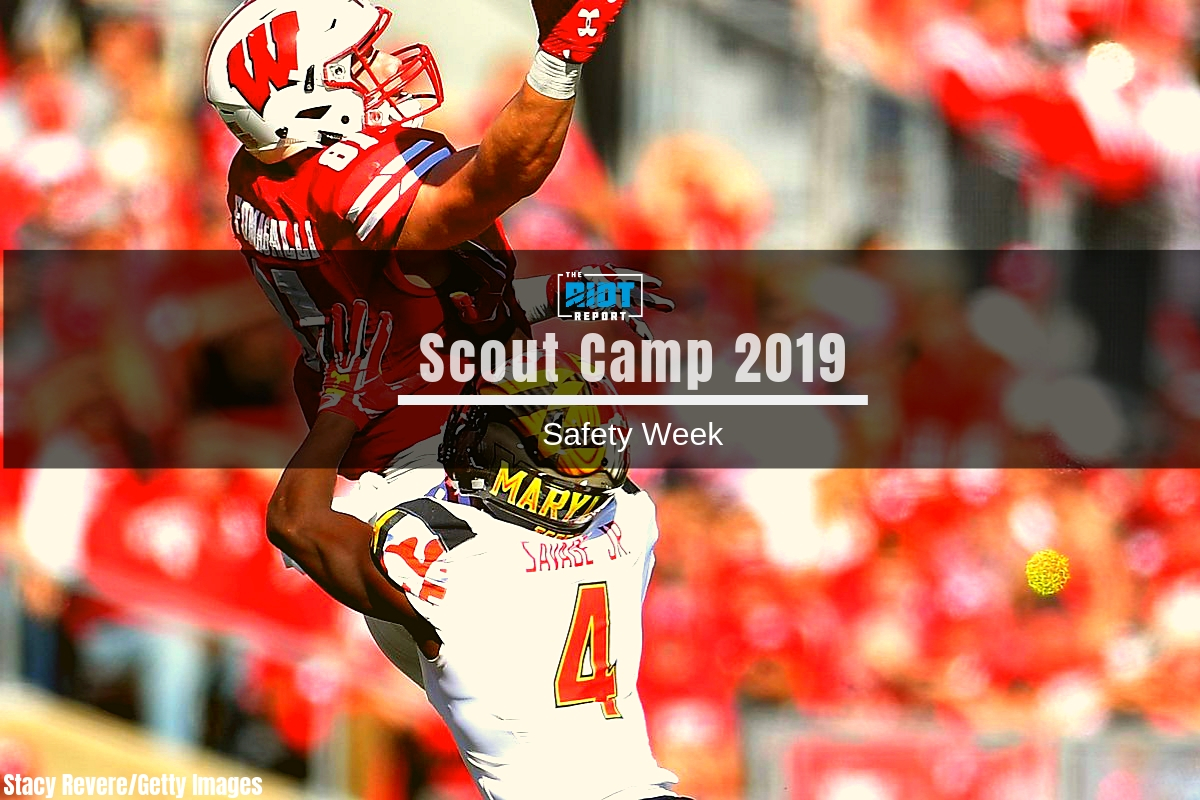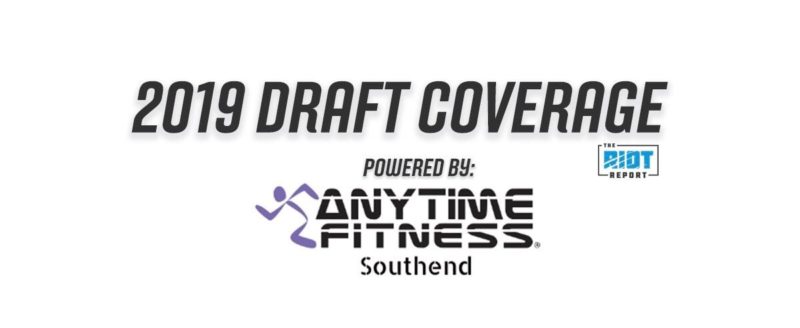We’ve been talking all week about the directions the Panthers could go at the free safety position – it’s one of the few positions on the roster where the cabinet is actually bare at the moment; would they look to an inexpensive free agent option like Tre Boston? An early draft pick like Chauncey Gardner-Johnson? Or would they choose from the multitude of available safeties in the middle rounds – check out my big board for some additional options in that regard. You can also check out this week’s episode of our podcast, which talks where the Panthers are at safety and why it’s so important that they improve.
For the Panthers to be able to secure one of the top three free safeties in the 2019 class, they will likely have to spend a pick in the first two rounds to do so. But if this is not the case, the Panthers may look to address this need with the first of two third round picks – and one player who has been mocked to this area in recent weeks is Maryland’s Darnell Savage. So what does Savage offer, where would he fit in the Panthers’ scheme and why might he fall as far as the third?
Athleticism and Coverage Ability
Darnell Savage is fast – very, very fast. This should not be a shock given his sub-4.4 40 yard dash at the combine, but it is also speed that really shows up on tape. In particular, this allows him to close a significant distant as a run defender, allowing him to help effectively from a deep starting position:
And to cover the full width of the field:
It also allows him to recover in coverage when he initially takes a missed step:
This is something that I will come back to in more detail in a bit. He also has the quickness to go with his deep speed, and this allowed him to be extremely effective in underneath zone in particular, closing quickly to prevent yards after the catch:
And to disrupt passes that most other defenders would be unable to prevent from being completed:
This is extremely valuable, especially in underneath coverage where this quickness increases the effective size of the zone he is able to occupy – and thereby increases his opportunities to make plays on the ball, plays which he flashes the ball skills to make the most of:
However, given how adept he was at breaking back to the ball and how much underneath zone he played, his seven career interceptions and 14 passes defensed are good but not great – this is another trait that I will come back to in a bit.
Of course, there is a lot more to coverage that just the ability to break on the ball coming downhill, and this is where there is a little more cause for hesitation with Savage. It is hard to see on both of the following plays, as he is right to the edge of the screen, but on both plays he struggles to stay with the receiver at the route head:
Despite having played almost all of his time at Maryland in the slot, Savage does struggle quite a bit when asked to match up with receivers, especially in man coverage. While he has the speed and quickness to run with almost anybody, his agility isn’t as good and better route runners will likely have limited difficulty getting away from him. The other issue with his underneath coverage is his tendency to get very flat-footed at the head of routes; while he is able to get away with this at times due to his closing speed:
It does also lead him to getting quite handsy at times, running the risk of getting called for holding penalties in order to prevent this separation at the head of the route:
It can also be an issue on vertical routes, where the fact that he is forced to turn his body around 180 degrees as the receiver passes him allows the receiver to get a level of vertical separation that a player with his speed really shouldn’t be allowing:
In short, Savage is not somebody who excels when asked to play a lot of man coverage – a major reason why most teams seem to view him as a safety despite his speed – but the issue becomes that he really wasn’t asked to play in this way at Maryland, and from the plays where he was asked to play in zone, there are enough questions to cause some hesitation. For a start, there were just too many plays underneath where he allowed easy receptions in his vicinity when the receiver got past him:
This stands in stark contrast to his ability to disrupt plays when he keeps the play in front of him. Of course, when playing deep – as he likely will have to in the NFL – the aim is to try and keep the play in front of you for the majority of the time, but even he doesn’t have the speed to always have this be the case and in the rare occasion where he was asked to play the deep middle in college, he didn’t really impress in terms of his ability to process:
This should, of course, be treated with something of a pinch of salt given that this wasn’t how he was asked to play the majority of the time, and the idea that this isn’t something he can learn is false. With that said, this certainly wasn’t something that he proved that he could do in college, and the plays where he looks somewhat lost in zone really don’t help:
Savage’s potential in coverage is huge – he has the speed and quickness to cover ground and make plays on the ball that almost every other safety in the NFL just doesn’t – but he also lacks experience playing the deep middle and did show some issues when everything wasn’t in front of him in underneath zone while struggling against better route runners in man. The potential is there, but he does need a not-insignificant amount of development to get close to his coverage ceiling.




